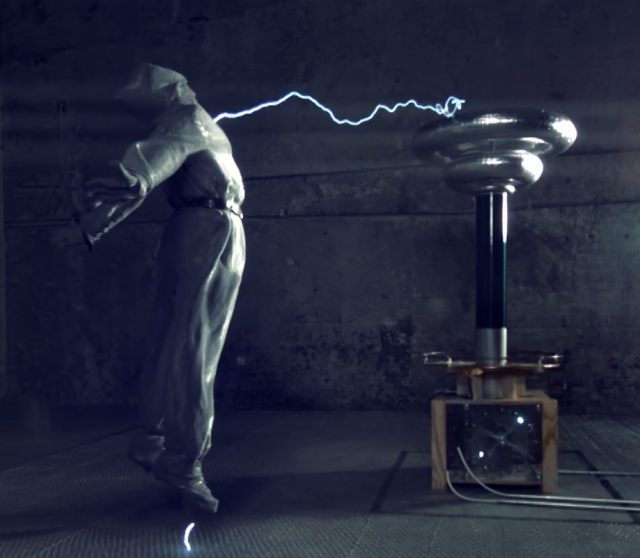
Reader Hauke Menges (FeelYourSound.com) let us know about this amazing music video, for Nigel Standford’s Cymatics.
Cymatics is the science of visualizing sound waves. The video does a great job of incorporating a wide variety of cymatic scientific visualizations – in sand, water, fire and electricity – and doing it in an artistic way.
Check out the video below and let us know what you think!
If you’re interested in learning more about the various cymatic visualizations used in the video, see the ‘behind-the-scenes’ videos that follow.
Chladni Plate
This is a speaker with a metal plate attached. You pour sand on the plate, and play various tones though the speaker. The vibrations of the plate move the sand into different patterns depending on the pitch of the sounds.
https://vimeo.com/111118035
Hose Pipe
If the speaker is vibrating at the same rate as the camera’s frame rate, the water will be in the same position each time a frame is taken, and will appear to freeze. A similar effect can often be seen when filming the hubcaps of a car moving at the right speed.
https://vimeo.com/111032701
Speaker Dish
The next experiment involved a dish of liquid on top of a speaker. Matching the camera frame rate made the liquid appear to stop moving.
https://vimeo.com/111111195
Ferro Fluid
The next cymatic involves ferro fluid – magnetic liquid. Because it’s magnetic and liquid, it can form shapes along magnetic lines.
https://vimeo.com/111044589
Ruben’s Tube
A Ruben’s Tube is typically a long pipe, drilled with holes along the top, and filled with propane. The gas comes out the top and you light it. When you play notes that match the resonant frequency of the tube, the sound forms high and low pressure zones of gas – and this effects the height of the flames.
https://vimeo.com/111025815
Tesla Coils
The finale of the video involved Tesla Coils – high voltage devices that generate arcs of electricity in the air. Tesla Coils generate a number of sparks per second, so the sparks can be both a cool sound source and an interesting visualization.
https://vimeo.com/111144171
For the video, Stanford recorded the Tesla Coil playing one of the parts in the final section, but ended up using synths for the music mix.
Note that the cymatic visualizations are all real demonstrations, but that the way this is edited, they do not necessarily reflect the music. Stanford and director Shahri Daud experimented to find the most visually interesting cymatic demonstrations, and then the music was written, based on the cymatics.
Cymatics comes from Stanford’s album Solar Echoes, which is available via Amazon and iTunes.
See Stanford’s site for more info.

Just awesome! My non-musician geeky buddies are gonna love this!
Very Cool!
This and the harmonic analysts videos are two of the coolest things I’ve seen in a long time.